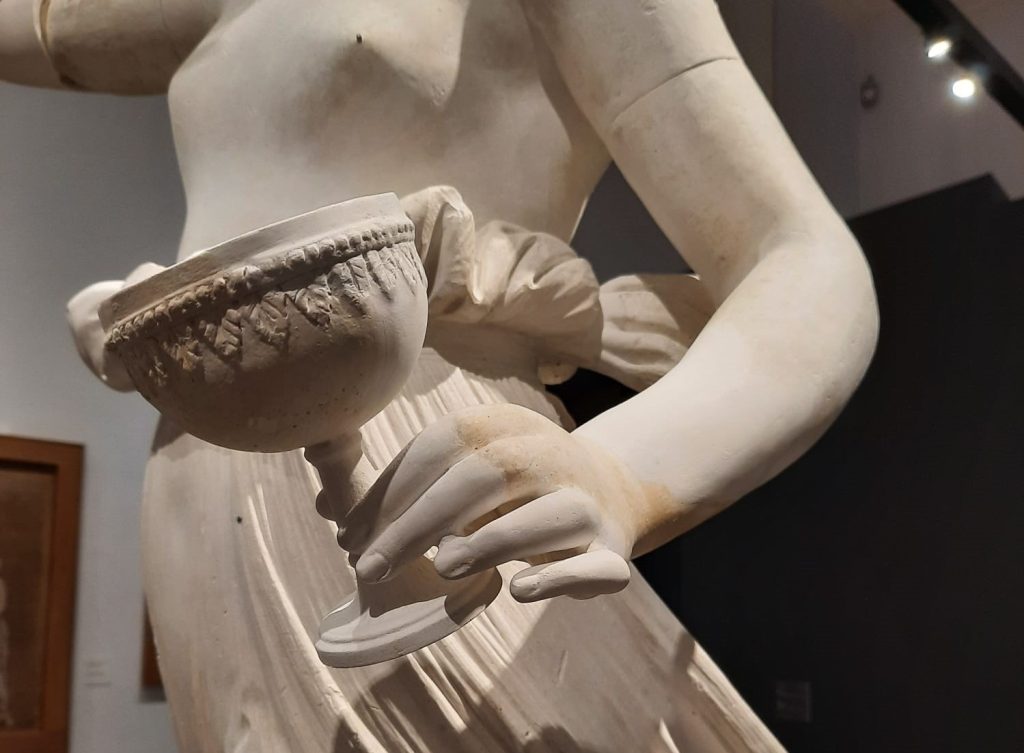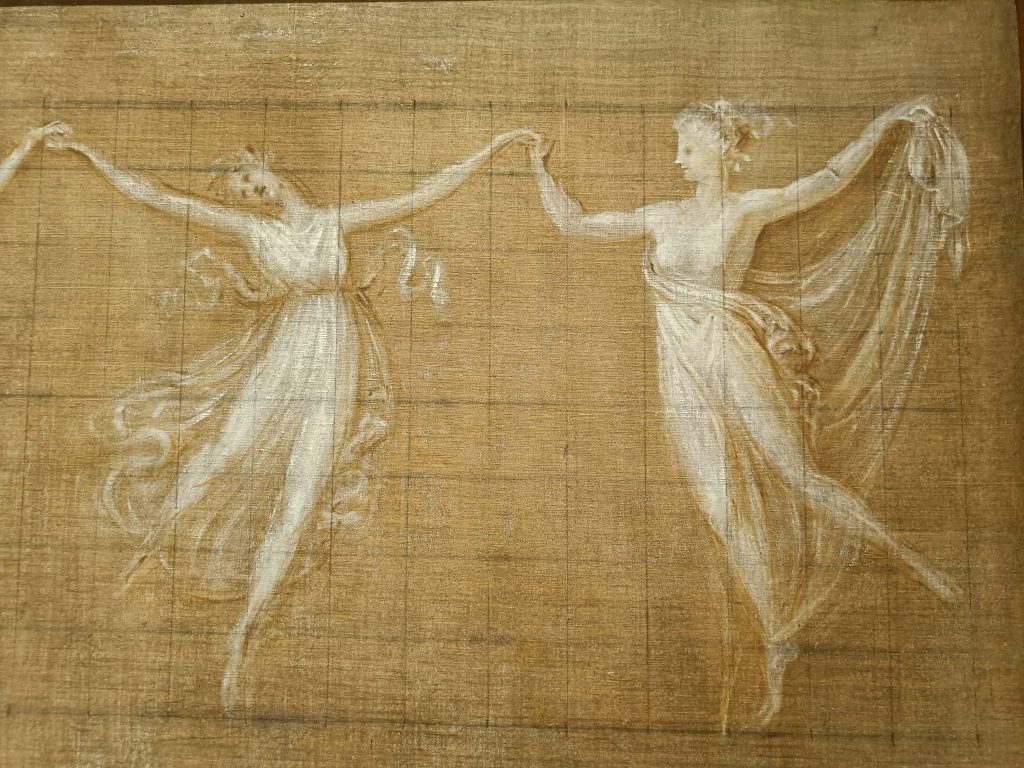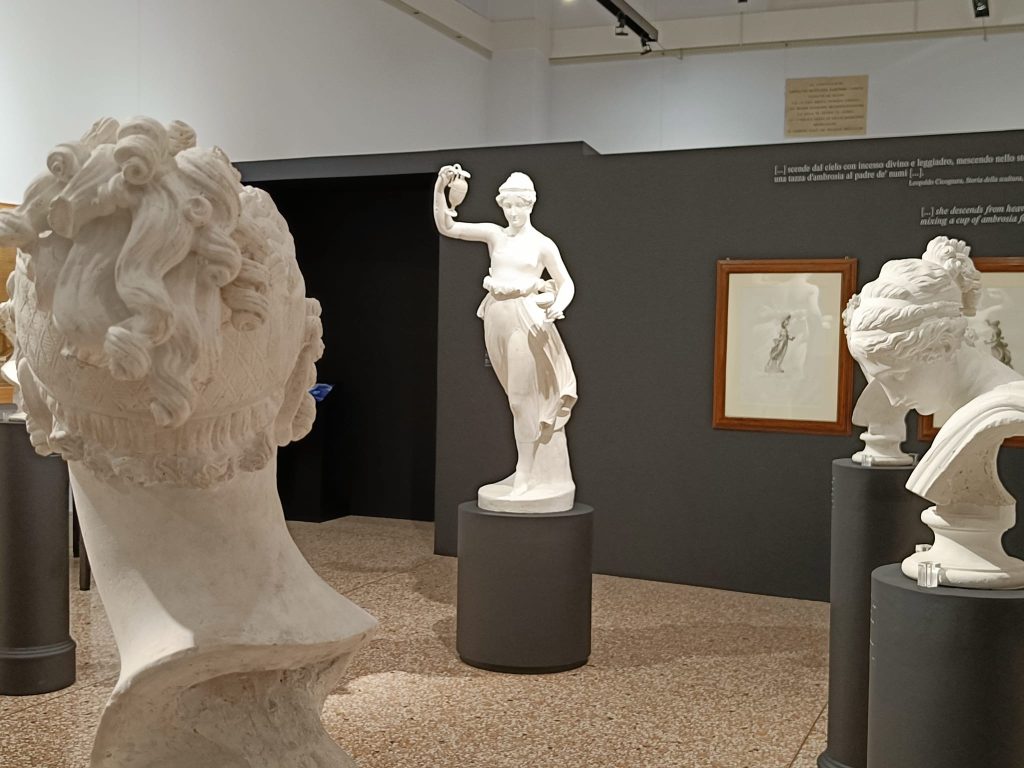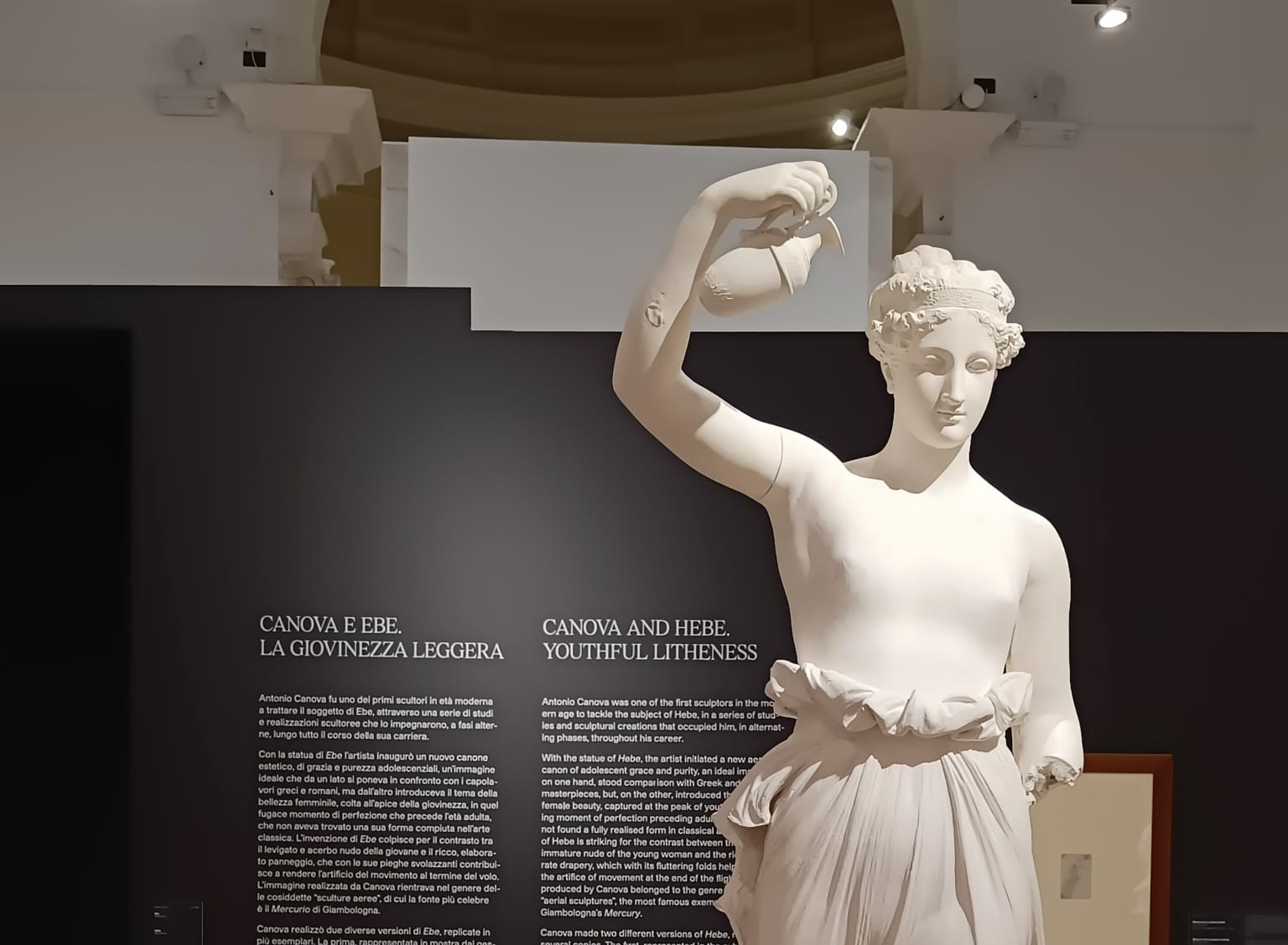The exhibition opened on December 4th Canova Hebe at the Civic Museums of Bassano del Grappa, in the province of Vicenza. It will end on May 30, 2022 and is part of the calendar of events for the celebration of two hundred years after the death of the Treviso artist Antonio Canova, international genius of Neoclassicism.
He was found again
On April 24, 1945, in the last days of fighting to free Italy from Nazi-fascism, some allied bombs accidentally land on the Museums Civics of Bassano del Grappa, damaging or even destroying many works of art. Among these works there is also a plaster from the workshop of Canova, the Hebe statue: the bombs deprive her of part of her leg and arms and mutilate her face. At that time she did not reserve the same consideration as today. For this reason the work was placed on the back burner until 1993, when the new director of the Museums, Mario Guderzo, decided to begin to reassemble it with the original pieces who were saved.
A few years ago, modern restoration techniques pushed the direction of the Museum to intervene again on the productThus, after another six months of work conducted by the Giordano Passarella Restauri company in Vicenza, Ebe returns to shine more beautiful than ever. The restoration work involved the use of ductile polymers coated with gypsum powder, so that the "additions" at the same time stood out from the original but in a non-impacting way.

The other Hebe
In the suggestive central exhibition hall, two Hebe face each other. One is the one just described, owned by the Museums of Bassano. The second arrives in the city of Grappa on loan from Palazzo Papafava in Padua and it is from 1806. A third plaster dates back to 1796, commissioned by Count Giuseppe Albrizzi and whose marble is now at the GAM in Milan. From the same model, however, the Hebe of the Nationalgalerie of Berlin and that of the Hermitage of St. Petersburg are born. The St. Petersburg opera had been exhibited at the Parisian salons in 1808 and had been criticized by the well-known intellectual Quatremère de Quincy. In the first instance for the vaporous cloud on which the figure rests and then for the use of bronze together with marble in the creation of the objects and jewels of the goddess.
Hebe in art
The exhibition of the Civic Museums develops an iconographic journey on the figure of Hebe starting also from the most ancient testimonies, those that probably Canova himself had seen and studied. Hebe is a figure from Greek mythology, known as the cup of the gods before it was replaced by Ganymede after wedding with Heracles. One version of the myth claims that the hero acquired strength and (almost) immortality precisely because of the ambrosia that Hebe had provided him. Among the most important exhibits on display there are the engravings of the Remondini Collection. In particular, those signed by Parmigianino, which depicts Hebe replaced by Ganymede, and that of Rosso Fiorentino, who portrays her as the Roman goddess Iuventas.

Very important the engraving by Cesare Ripa, from which it is possible that Canova took the model for the installation of his Hebe. Particularly interesting are the large monochrome canvases made by Canova himself that depict a series of dancers, also possible models for Hebe.
Hairstyling master
An interesting detail that emerges from the exhibition is theCanova's skill in creating hairstyles of the statues. When he had to make a full-length portrait of a woman, the artist often made a bust of it to better study the features of the face. The six heads on display here in the exhibition testify to this, but only one of them can be traced back to a known work by Canova. It is a portrait of Carolina Bonaparte, Napoleon's sister. These other heads, however, show off wonderful and complicated hairstyles created in plaster and then transposed into marble. The making of the plaster model, among other things, allowed Canova to change even just some details in the final marble, such as the hairstyle or the position of the arms or fingers.






